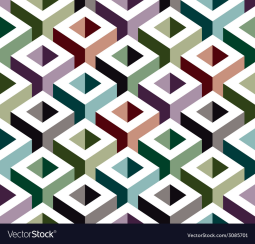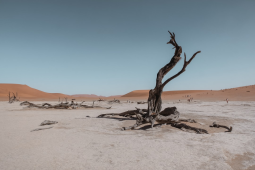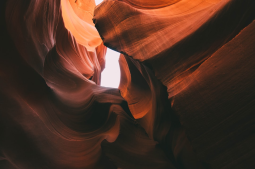
"Exploring the Future of Responsive Design: Challenges & Opportunities in 2023
Hey everyone! its been a while since we last discussed responsive design and its evolution. With the rapid growth of mobile devices, cross-device compatibility has become more crucial than ever. Let's dive into the challenges and opportunities that the future holds for us in responsive design, especially focusing on 2023. Let's share our thoughts, experiences, and predictions about how we can make our designs even more adaptable to various screen sizes, devices, and user behaviors. Looking forward to an enlightening discussion!
Hey folks !
Want to spice up your UI designs a bit? I've got something cool to share that might just do the trick! Meet Midjourney, this awesome AI imagery generator. The latest version (v7) is a game-changer in terms of visual output quality. There are tons of articles and videos out there showing off its abilities across various visual mediums, but not many delve into UI design specifically. I thought I'd jump in and share a handy prompt template you can use to generate some killer UI designs with Midjourney. Plus, I'll throw in some tips and tricks on how to make the most of its capabilities for even better results! Give it a try and let me know what you think What are your favorite AI-generated UI design creations so far? Can't wait to see what we can create together!
"A New Spin on Responsive Design: Breaking Boundaries in Mobile Experiences!
hey everyone! i've been playing around with a few new responsive design concepts lately and stumbled upon something really fascinating. it seems that some designers are starting to push the boundaries of adaptiveness, making designs not just responsive across devices but truly immersive and dynamic too! here's an example i found: [insert link here to showcase the design] what do you think about this innovative approach? is there anyone else exploring similar ideas? let's discuss how we can elevate our mobile experiences even further!
**Design a "Switcheroo" Site: Challenge Your Skills in Cross-Device Design!**
hey there, designers! let's shake things up this week with an exciting challenge! imagine creating a website where the layout reverses when you switch devices. what's on mobile becomes desktop-friendly, and vice versa! this isn't just about responsive design; it's about breaking norms and pushing our creativity to new heights! let's see who can come up with the most innovative, functional, and aesthetically pleasing "switcheroo" site. share your designs, discuss the challenges you face, and learn from each other as we experiment together! happy designing!
"Is Flexbox the Future of Responsive Design? Let's Discuss!
Hey there design enthusiasts! I recently stumbled upon an article arguing that flexbox could be the future of responsive design, and it got me thinking. With its ability to align items with ease and create complex layouts, it seems like a game-changer for cross-device compatibility. But what are your thoughts? Have you used flexbox in your projects yet? Let's share experiences and opinions on the pros and cons of using flexbox for responsive design! Looking forward to hearing from you all!
Should We Prioritize Mobile Over Desktop in Responsive Design? Let's Debate!
hey there fellow design enthusiasts! Recently I've been wondering if it's time for us to switch our focus from desktop design to mobile-first when creating responsive designs. With the increasing number of users accessing websites via smartphones, it seems like a logical step. But what are your thoughts? Let's discuss the pros and cons of prioritizing mobile over desktop in our design process! #ResponsiveDesign #MobileFirst #CrossDevice #AdaptiveDesign
"Struggling to make my layout work across multiple devices - any suggestions for a more responsive a
hey there design enthusiasts! i'm trying to perfect my current project but have been finding it a challenge to create a layout that works seamlessly across various devices, from desktops to mobile phones. are there any tried-and-true techniques or resources you could recommend to help me improve the responsiveness of my designs? any insights are greatly appreciated!
"Should We Prioritize Mobile First Design in Today's Multi-Device World?
hey fellow design enthusiasts! with the rapid evolution of technology, it's no surprise that our designs need to adapt to an array of devices. i've been pondering whether we should prioritize mobile first design more than ever before. thoughts? let's discuss! ✍️️
"Awesome Responsive Design Technique I Stumbled Upon!
Hey fellow designers, I was working on a project this week and stumbled upon an interesting responsive design technique that I thought I'd share with everyone here. I found that using CSS grid layout in combination with media queries can really streamline the process of creating adaptable designs across multiple devices. For example, I was able to arrange my elements both horizontally and vertically with just a few lines of code, and the layout adjusts seamlessly as the screen size changes. It's been a game changer for me and I've noticed a significant improvement in the consistency of my designs across devices. I'd love to hear about any creative responsive design techniques you guys have found useful or interesting lately! Let's continue learning together as we build beautiful, adaptable designs. Cheers!
AI and Product Design: A Fresh Perspective!
Hey folks, I've been diving deep into some cool stuff lately - the intersection of AI and product design! It's mind-blowing to see how AI is reshaping our design world. So, instead of just focusing on the visual aesthetics or user interface, we're starting to think about things like feedback, intent, and future roles in a whole new light. Ever wondered what could be next for us designers? I mean, imagine being able to create an experiential future that's not just responsive but generative too! It's like stepping into a sci-fi movie, isn't it? Anyways, I thought this was pretty fascinating and wanted to share. What do you guys think about this AI-product design combo? Could it revolutionize our field? Or are there challenges we haven't considered yet? Can't wait to hear your thoughts!
AI and Product Design: A Fresh Perspective!
Hey folks, I've been diving deep into some cool stuff lately - the intersection of AI and product design! It's mind-blowing to see how AI is reshaping our design world. So, instead of just focusing on the visual aesthetics or user interface, we're starting to think about things like feedback, intent, and future roles in a whole new light. Ever wondered what could be next for us designers? I mean, imagine being able to create an experiential future that's not just responsive but generative too! It's like stepping into a sci-fi movie, isn't it? Anyways, I thought this was pretty fascinating and wanted to share. What do you guys think about this AI-product design combo? Could it revolutionize our field? Or are there challenges we haven't considered yet? Can't wait to hear your thoughts!Source: https://uxdesign.cc/from-design-to-direction-bridging-product-design-and-ai-thinking-1d372707472d?source=rss----138adf9c44c---4

AI Trust Game Changer: A Friendly Guide to Boosting User Confidence
Hey folks! Ever noticed how our trust in AI can make or break the whole digital experience? Well, that's the 'invisible UI' we're talking about nowadays. When it's all good, interactions with AI feel like a breeze. But when things go south, it's game over, fast! But here's the thing, building trust ain't some magical stuff. It can be understood, measured, and designed for. Wanna know how? Here are some practical tips and tricks to create more reliable and ethical AI interfaces that users will love trusting! So, what do you think about this? How important is AI trust in your digital experience? Let's chat!Source: https://smashingmagazine.com/2025/09/psychology-trust-ai-guide-measuring-designing-user-confidence/

AI and Product Design: A Mind-Blowing Connection!
Hey there, design peeps! Just wanted to share some super cool insights I've been mulling over lately about how AI is shaking things up in our world of product design. So, here's the deal: instead of just being a buzzword, AI could actually be the missing link that connects our creative minds with a whole new level of user experience! Ever wondered what happens when we blend core AI concepts like feedback and intent with our design skills? Well, it opens up a whole new world of possibilities. We're not just talking about making things look pretty, but creating interactive experiences that are truly generative (yep, sounds fancy, right?). Remember those endless hours spent flipping through books at Barnes & Noble to understand UX back in the day? Now imagine being able to anticipate and respond to user needs like never before - it's a game-changer! This whole idea got me thinking: what if AI becomes our creative partner rather than just a tool? How will this change the way we design, collaborate, and shape the future of products? What do you guys think about this exciting blend of AI and product design? Share your thoughts - I'd love to hear 'em!
Pro tip for designers: Catching the attention of the 810 million English Language Learners out there
Hey folks! So, I came across this fascinating read about how we should be thinking beyond just creating content in English. Did you know that over a billion people use English as a second language? That's almost thrice the number of native speakers! Now, here's where it gets interesting - when these learners interact with our content, they're not just reading it, they're reconstructing context! Isn't that mind-blowing? It means we need to design with a bit more care and consideration for this massive group. So, what do you think? Are you up for the challenge of designing for English Language Learners too? Let's make our designs more inclusive and accessible! Share your thoughts below!Source: https://uxdesign.cc/the-invisible-gap-designing-for-users-who-reconstruct-not-just-read-deae09b93a93?source=rss----138adf9c44c---4

"Awesome CSS Trick for Horizontal Scroll Navigation in Responsive Design!
hey folks! hope everyone's been doing great with their design projects lately. i just came across a super-handy tip for creating horizontal scroll navigation in responsive designs using pure css. it's perfect for showcasing lots of content without taking up too much vertical space. here's the magic sauce: ```css /* reset default list styles */ ul { list-style-type: none; } /* set container, children width and padding to distribute items evenly */.nav-container { display: flex; justify-content: space-between; width: 100%; padding: 0 20px; }.nav-item { width: 25%; padding: 10px; } /* add overflow-x for horizontal scroll */.nav-container { overflow-x: auto; } ``` of course, you'll want to customize the classes to fit your specific design needs. happy scrolling! let me know if you have any questions or suggestions for improvements. best, [your name
"Flexbox Magic: Creating Responsive Design Wonders!
hey there fellow design enthusiasts! i've been playing around with flexbox lately and let me tell you, it's a game changer for responsive designs. i've noticed that by combining flex containers with media queries, we can create adaptive layouts that work seamlessly across different devices. what are your thoughts on this? have you encountered any interesting flexbox tricks recently? let's share and learn together!
"Flexbox Magic for Seamless Responsive Design
hey fellow designers! I recently stumbled upon a game changer in my responsive design journey - Flexbox! It's a CSS layout module that provides a flexible container for adaptable designs across devices. Here's an interesting trick: You can use the flex-wrap property to ensure your content doesn't overflow when the screen gets smaller. Just set it to wrap and voila, your design adapts beautifully without compromising its integrity! Let's discuss some creative ways we've used Flexbox in our projects - share yours below!
**Design Duel: Create a Stunning One-Page Website That Adapts Perfectly to Any Screen Size!**
hey designers! let's put our responsive design skills to the test in this exciting challenge. design a stunning, single-page website that looks great on any device, from smartphones to desktops. the catch? it has to be eye-catching, informative, and intuitive to navigate. let's see who can create the most visually appealing, user-friendly, and adaptive design. share your work in progress and get feedback from fellow designers. let's push our creativity to its limits and learn from each other!
Hey Folks!
Just stumbled upon something cool from Figma that's got me thinking… Check out this video - https://www.youtube.com/watch?v=bozENeOTHVo For years, we've been drilling the importance of design systems as our one-stop shop for design knowledge. We've created libraries, spread the word about tokens, and honed our handoffs to perfection. Yet, sometimes it felt like the system was just… well, a library - neatly organized but not much more. But what if I told you things are changing? ️ They call it Interactive, Intelligent, and Integrated Design System Paradigm! What do you think about that? Could this be the game-changer we've been waiting for in responsive design? Let's chat about it!Source: https://uxplanet.org/interactive-intelligent-and-integrated-the-new-design-system-paradigm-5eaa217608fd?source=rss----819cc2aaeee0---4

Stuck with responsive design for mobile users - Need some advice!
Hey everyone! im currently working on a web project and running into an issue when it comes to making sure my site looks great on all devices, especially mobile phones. I've tried using media queries and flexible grids, but there are still parts that look wonky or dont resize as expected. Does anyone have any tips or tricks for making a truly responsive design that scales well across different screen sizes? Let's share some wisdom! Thanks in advance :)
Let's Talk About AI Trust
Hey there, fellow design enthusiasts! Got something cool to share that's been on my mind lately. You know how AI is becoming more and more integrated into our digital products? Well, it turns out that trust has kinda become the hidden UX (user experience) now! Imagine this: when things run smooth as butter with AI, interactions feel effortless and natural. But when something goes wrong… well, let's just say the whole shebang can come crashing down faster than a house of cards! But here's the thing - trust isn't some magic wand wielded by the tech gods. It can be understood, measured, and designed for! So, I thought it would be super interesting to dive into practical methods and strategies for crafting AI experiences that not only work well but also earn user confidence and trust. What do you think? Any thoughts or suggestions on the topic? Let's chat about it!Source: https://smashingmagazine.com/2025/09/psychology-trust-ai-guide-measuring-designing-user-confidence/

Hey Design Fam,
Just wanted to share this rad new video from Figma! Check it out: https://www.youtube.com/watch?v=bozENeOTHVo For ages we've been drilling the design system as our one true Bible. We've crafted libraries, shouted about tokens, and nailed down those pesky handoffs. But let's be real, most of the time it felt like just another neatly sorted design library. So, what if I told you that things are changing? This video hints at a new design system paradigm: interactive, intelligent, and integrated! How cool is that? Curious to hear your thoughts on this shift towards a more dynamic design system. What do y'all think? Is this the future we've been waiting for?
"A Little CSS Trick for Fluid Images in Responsive Design
Hey folks! I've been working on a project recently where I had to make sure images scaled nicely across various devices. I stumbled upon a neat little trick that might help some of you too! Instead of using percentages for the width, set the max-width property for your images. This way, they will never exceed their maximum width but can still scale down as needed. its been a game changer for me and hope it helps someone here! #responsivedesign #mobilefirst
The One Pixel Challenge: Designing a Perfect Layout with Just One Pixel!
Hey there, Responsive Design folks! Let's spice things up a bit and dive into an exciting challenge! I present to you - "The One Pixel Challenge"! The goal is to design an aesthetically pleasing and functional layout using just one pixel. Let's see how creative we can get while pushing the boundaries of adaptive design! ✨ Remember, its not about perfection but innovation! Let's learn from each other and have fun in the process! Share your designs here and let's celebrate our community's creativity!
"A little CSS trick for perfect responsive images!
Hey there fellow designers! I stumbled upon a super helpful trick while working on my latest project and thought I'd share it here. It's about making sure your images look great on all devices without breaking the design flow. Here's what you do: instead of using fixed-width images, use `max-width: 100%` and `height: auto`. This keeps the image from pushing other content around, and it also ensures that it scales nicely to fit any screen size. I've been loving this little trick, hope it helps you too! Cheers, [Your Name
"Flexbox Magic: A New Way to Make Our Designs Dance Across Devices!
Hey there fellow design enthusiasts! I've recently come across an amazing trick using Flexbox that's been making my responsive designs sing like never before. It's not just about making our creations adaptive, but also adding a bit of dance to them as they move seamlessly across devices! Let's share our experiences and learn from each other on how we can make the most out of this powerful tool. Looking forward to seeing your thoughts!
"Designing for the Unusual Suspects: Let's Create a Page for Rare Device Sizes!
hey fellow designers! let's put our responsive design skills to the test with an exciting challenge this week. instead of focusing on common device sizes, let's create a page tailored for some rare but intriguing devices out there. we could be designing for a smartwatch with a tiny screen, a foldable phone, or even a smart fridge interface! let's share our unique solutions and discuss the challenges we faced while catering to these unusual device sizes. this challenge not only encourages creative thinking but also promotes learning from each other's experiences. bring on the crazy ideas, and let's design something out of the ordinary! remember, a well-designed page should be responsive across all devices - even those that make us scratch our heads in wonder! happy designing! :)
"A Hidden Gem in Responsive Design: Breakpoint Strategies Comparison
Hey Designers! I stumbled upon this fascinating comparison of various breakpoint strategies used in responsive design. It got me thinking about which approach works best for different projects and why. For example, its interesting to see how some designers favor 'mobile first' while others prefer 'desktop first'. Have any of you guys experimented with these approaches and noticed a significant difference? I'd love to hear your thoughts! Let's share our experiences, learn from each other, and find the best breakpoint strategies for our projects together. Looking forward to an enlightening discussion!
Oh boy, designing for 'all-knowing' systems - a real doozy!
Hey there fellow design enthusiasts! So today I want to talk about something that has been driving me nuts recently - designing for omniscience. Ever clicked a button and had a system act all weird with no warning or way to back out, only to find out hours or even days later that it messed everything up? This is what I like to call "designing for omniscience" - when systems assume we're all-knowing beings and just silently go about their business. It's super frustrating, right? But here's the question: how do we design systems that don't make this mistake? What are your thoughts on this? Let's chat!
**"A Trick for Consistent Spacing in Responsive Design"**
hey folks! i've been wrestling with maintaining consistent spacing across devices in my responsive designs recently, and i stumbled upon a little trick thats been saving me a ton of time. instead of using absolute units like pixels, try switching to relative units like em or rem for your margins and paddings. they scale beautifully with the font size, making your design adapt effortlessly across devices! let's hear about your experiences with this technique.
Trusting AI Like a Pro!
Hey there friends, I've been thinking a lot about how AI is creeping into our digital world more and more these days. And you know what? Turns out trust is the real secret sauce when it comes to making sure those AI interactions feel natural and smooth. When everything clicks, it's like magic! But when things go south, well… it can leave a bad taste in our mouths quicker than burned popcorn at a movie night But guess what? Trust ain't some mysterious force. It's something we can actually get a handle on! Here are some practical tips and tricks to help make sure your AI designs are trustworthy and ethical as heck! What do you guys think? How have you seen trust play out in your own AI experiences? Let's chat about itSource: https://smashingmagazine.com/2025/09/psychology-trust-ai-guide-measuring-designing-user-confidence/

Need Help with Making a Website Design Responsive for Different Devices
Hey fellow designers! I've been working on a new website design and am having trouble making it adapt to different devices smoothly. I want my design to be responsive, mobile-friendly, and cross-device compatible. Any tips or tricks that you've used in your projects to make this process easier? Let's share our expertise and learn from each other! Thanks in advance for your help :)
"Flexbox Magic for Perfect Responsive Design!
hey everyone! hope y'all are designing some amazingly responsive sites. i recently stumbled upon a little trick with flexbox that might come in handy for us. instead of using media queries for every device size, why not let flexbox handle the layout changes? by setting the container to display: flex and applying align-items: center and justify-content: space-between, you can easily make sure your content stays aligned perfectly on various screen sizes. give it a try and let's discuss!
Pro Tip: Simplifying Media Queries with CSS Custom Properties (CSS Variables)
hey folks! I've been using CSS Custom Properties, also known as CSS Variables, to simplify my media queries significantly in responsive design projects. By storing shared values like breakpoints or font sizes as custom properties, I can easily override them within media queries without repeating the same values everywhere. It makes managing multiple stylesheets much more manageable! What's your take on this? Have you guys tried using CSS Custom Properties for responsive design yet? Let's discuss how we can make our workflows even smoother with this handy feature!
"Flexbox Magic Trick for Perfectly Aligned Elements in Responsive Design!
hey there, fellow design enthusiasts! I've been having a blast exploring the world of responsive design lately, and I stumbled upon this little gem that's been making my life so much easier. It's all about using Flexbox for perfectly aligned elements in any screen size! The trick is to set your container's display property to 'flex', and then use the 'justify-content' and 'align-items' properties to control horizontal and vertical alignment respectively. Give it a try, I promise you won't regret it! Let's hear about your favorite Flexbox tricks or any challenges you've faced while working with it in the comments below. Happy coding! ️
Stumped by a tricky responsive design issue - need some help!
hey community, i've been working on this project for a while now and i've hit a roadblock with responsive design. i'm trying to create a layout that looks great on both desktop and mobile devices, but i'm having trouble making the content flow smoothly without breaking the design structure. any tips or suggestions on how to solve this issue would be greatly appreciated! let's share some knowledge and help each other out :)
"A Flexible Approach to Responsive Design: Embracing the Flexbox Magic!
Hey designers! I've recently stumbled upon a game-changer in responsive design - the good old Flexbox. It's been around for a while, but it's still not getting enough love! Flexbox allows us to create flexible and adaptable layouts with ease. It's perfect for making elements resize and rearrange themselves based on screen size, ensuring your designs look great across all devices. Give it a try next time you're working on a responsive project, and let's hear about your experiences in the comments! Happy designing!
Boosting Trust in AI? Here's a Guide on Measuring and Designing for Confidence!
Hey fellow design enthusiasts! Ever wondered why some AI interactions just feel so right, while others leave us scratching our heads? Well, it turns out trust is the hidden star of our digital interface show! In today's world where AI is becoming more generative and agentic than ever before, trust has become the secret sauce that makes or breaks our user experiences. When everything clicks, interactions flow like a well-choreographed dance. But when things go south, it can feel like we're backstage in a chaotic rehearsal! But fear not, my friends! Contrary to popular belief, trust isn't some mystical force that only the wise and powerful can understand. Nope! It's something we can actually measure and design for! So grab your favorite coffee (or tea if you're like me) and join me on this fascinating journey! And just a quick question, have you ever felt more confident using an AI system after understanding how it worked? I'd love to hear your thoughts! ✨
Boosting Trust in AI? Here's a Guide on Measuring and Designing for Confidence!
Hey fellow design enthusiasts! Ever wondered why some AI interactions just feel so right, while others leave us scratching our heads? Well, it turns out trust is the hidden star of our digital interface show! In today's world where AI is becoming more generative and agentic than ever before, trust has become the secret sauce that makes or breaks our user experiences. When everything clicks, interactions flow like a well-choreographed dance. But when things go south, it can feel like we're backstage in a chaotic rehearsal! But fear not, my friends! Contrary to popular belief, trust isn't some mystical force that only the wise and powerful can understand. Nope! It's something we can actually measure and design for! So grab your favorite coffee (or tea if you're like me) and join me on this fascinating journey! And just a quick question, have you ever felt more confident using an AI system after understanding how it worked? I'd love to hear your thoughts! ✨Source: https://smashingmagazine.com/2025/09/psychology-trust-ai-guide-measuring-designing-user-confidence/

The Pros and Cons of Mobile-First Design for Responsive Web Development
Hey there fellow design enthusiasts! I've been thinking a lot lately about the mobile-first approach in responsive web design, and it seems like it's become quite the talking point. While some argue that designing for smaller screens first leads to more efficient development, others are concerned about potential issues with complex layouts or content saturation on smaller devices. What do you guys think? Have any of you had experience with both mobile-first and desktop-first approaches, and if so, which did you prefer, and why? Let's have a lively discussion!
On being a designer in the AI era: Some food for thought!
Hey folks, Just came across this rad read by Filipe Nzongo from 2025 that got me thinking… as designers, we've always been about unleashing our creative juices and turning brainstorms into reality. Lately though, it feels like some of that magic is fading, leaving us wondering if design as we know it might be losing its essence. The article dives deep into how AI is reshaping the landscape, and while it's exciting to think about what that could mean for our profession, it also brings up questions: How can we stay relevant in this rapidly-evolving world? Is there a way to harness AI to fuel our creativity rather than replace it? What are your thoughts on this? I'm curious to hear everyone's take!
On being a designer in the AI era: Some food for thought!
Hey folks, Just came across this rad read by Filipe Nzongo from 2025 that got me thinking… as designers, we've always been about unleashing our creative juices and turning brainstorms into reality. Lately though, it feels like some of that magic is fading, leaving us wondering if design as we know it might be losing its essence. The article dives deep into how AI is reshaping the landscape, and while it's exciting to think about what that could mean for our profession, it also brings up questions: How can we stay relevant in this rapidly-evolving world? Is there a way to harness AI to fuel our creativity rather than replace it? What are your thoughts on this? I'm curious to hear everyone's take!Source: https://uxdesign.cc/hey-designer-do-you-know-what-you-are-doing-aaec674d5532?source=rss----138adf9c44c---4

"Flexbox Magic for Perfectly Balanced Layouts
hey folks! i've recently discovered a game changer in responsive design - flexbox. it's a css layout module that provides a flexible way to lay out, align and distribute space among items in a container. by using properties like `display: flex`, `flex-wrap`, `justify-content`, and `align-items`, you can create beautiful, adaptive designs that resize perfectly for different screen sizes. give it a try and let's share our experiences! #responsivedesign #flexboxmagic #mobileadaptive
Trusting Our AI Pals: A Lowdown on Measuring and Designing for User Confidence
Hey folks! So, more and more of our digital pals are starting to act a bit smarter these days with AI on board. But have you ever stopped to wonder what's really going on behind the scenes when we trust those bots? Well, let me spill the beans… or bytes rather Turns out, trust is kind of like the secret sauce for a smooth interaction between us humans and AI. When everything clicks, it feels like magic! But when things go sideways, man, it can be an epic fail that leaves you scratching your head. But here's the kicker: trust ain't some mystical force. It's something we can actually wrap our heads around, measure, and even design for! So, what are some practical ways to create AI experiences that people feel confident in? Well, here's a sneak peek at the strategies that I find most interesting. Now I'm curious - what do you think about this whole trusty AI business? Ever had an experience with an AI that left you feeling super confident or completely baffled? Let's chat about it!
Trusting Our AI Pals: A Lowdown on Measuring and Designing for User Confidence
Hey folks! So, more and more of our digital pals are starting to act a bit smarter these days with AI on board. But have you ever stopped to wonder what's really going on behind the scenes when we trust those bots? Well, let me spill the beans… or bytes rather Turns out, trust is kind of like the secret sauce for a smooth interaction between us humans and AI. When everything clicks, it feels like magic! But when things go sideways, man, it can be an epic fail that leaves you scratching your head. But here's the kicker: trust ain't some mystical force. It's something we can actually wrap our heads around, measure, and even design for! So, what are some practical ways to create AI experiences that people feel confident in? Well, here's a sneak peek at the strategies that I find most interesting. Now I'm curious - what do you think about this whole trusty AI business? Ever had an experience with an AI that left you feeling super confident or completely baffled? Let's chat about it!Source: https://smashingmagazine.com/2025/09/psychology-trust-ai-guide-measuring-designing-user-confidence/

Check this out, ya'll! Figma just dropped a cool vid that's got design nerds like me buzzing!
For years we've been spouting about design systems as the one and only truth source. We built libraries, preached tokens, and perfected our handoffs. But let's be real, often it was just a library - a well-organized collection of assets next to… well, who knows what! But now, things are changin'! Figma's talkin' 'bout design systems becomin' Interactive, Intelligent, and Integrated. So instead of just lookin' at static components, we can interact with them in real time. Neat, huh? What do you guys think about this new paradigm? Do you think it's gonna revolutionize the way we design or is there still room for improvement? Let's chat!Source: https://uxplanet.org/interactive-intelligent-and-integrated-the-new-design-system-paradigm-5eaa217608fd?source=rss----819cc2aaeee0---4

Navigating My First 3 Months as a UX Designer! Thoughts, Tips, and Questions
Hey folks! I've just started my new gig as a UX Designer (yay!) but I must say, it's been a bit overwhelming. You know that excitement mixed with anxiety when you start something new? Yeah, that's me right now So I was thinking, maybe some of you have been through this too and can offer some advice or share your experiences on how to make the most out of those first crucial 90 days. It's all about strategic onboarding and scoring those early wins, am I right? But there's so much to learn and not enough time! Any tips for getting up to speed quickly without feeling overwhelmed? And hey, what were some things that you wished you knew earlier in your UX journey? Looking forward to hearing your thoughts and ideas!Source: https://uxplanet.org/the-first-90-days-as-a-product-or-ux-designer-626f4b3090c9?source=rss----819cc2aaeee0---4

Boosting Your Design Skills in the AI Era!
Hey fellow designers, Ever felt like your creative mojo is dwindling? Well, I've got some fresh insights to share that might just reignite that spark! Turns out, our good pal Filipe Nzongo (2025) has been diving deep into this topic and guess what? AI isn't here to steal our jobs… instead, it's helping us level up! So, whether you're feeling a bit lost or just looking for ways to outdo yourself, check out his latest findings on how to build your design competence in the age of AI. Who knows? It could be the key to unlocking even greater creativity! Oh, and here's a question to ponder: What do you think about this AI-fueled design revolution? Are you excited or apprehensive? Can't wait to hear your thoughts in the comments!
Hey there fellow design peeps! ✨
Just started a new gig as a UX designer? Congrats, you're gonna rock it! But hey, we all know that first 90 days can be a rollercoaster ride filled with anxiety and uncertainty. Am I right? That's why I wanted to share something super helpful - "The First 90 Days as a UX Designer," a practical guide to help you navigate those early days like a pro! It'll teach you all about strategically onboarding and scoring some early wins. Trust me, making an impact fast will make those initial jitters disappear faster than a piece of cake at a baker's convention! So, here's the deal: we've all been there, first day jitters, trying to impress, and learning more than our brain can handle. But let's face it, who doesn't love a challenge? Let's talk about your experiences! How did you tackle those first 90 days? Any tips or tricks to share with the community?Source: https://uxplanet.org/the-first-90-days-as-a-product-or-ux-designer-626f4b3090c9?source=rss----819cc2aaeee0---4

The Future of Mobile Design: Adaptive vs Responsive, Which Way to Lean?
Hey fellow designers! I've been thinking a lot about mobile design lately adn I'm curious to hear everyone's thoughts on this ongoing debate between adaptive and responsive design. In my opinion, both methods have their pros and cons. Adaptive design delivers custom experiences for each device, which can lead to better user experience, but it requires more effort in development. On the other hand, responsive design adjusts seamlessly across devices, making it easier to maintain but potentially sacrificing a tailored user experience. Where do you stand on this? Let's discuss!
Hey Design Fam, Level Up in this AI Era!
Hey folks! Guess what I found while scrolling through the interwebs? A sweet read by the brilliant Filipe Nzongo (2025) on how to keep our creative juices flowing in these tech-driven times. You know, being a designer is like being an artist with a toolbox - we turn chaotic thoughts into cool creations! But let's face it, sometimes the pressure of AI can make us feel more like robots than artists, right? Well, this article promises to help us rediscover our spark. So, here's a thought: maybe instead of feeling threatened by AI, we should learn from it and use it to boost our skills and stay ahead of the game! What do you think? Let's chat about it in the comments!
Hey Design Fam, Level Up in this AI Era!
Hey folks! Guess what I found while scrolling through the interwebs? A sweet read by the brilliant Filipe Nzongo (2025) on how to keep our creative juices flowing in these tech-driven times. You know, being a designer is like being an artist with a toolbox - we turn chaotic thoughts into cool creations! But let's face it, sometimes the pressure of AI can make us feel more like robots than artists, right? Well, this article promises to help us rediscover our spark. So, here's a thought: maybe instead of feeling threatened by AI, we should learn from it and use it to boost our skills and stay ahead of the game! What do you think? Let's chat about it in the comments!Source: https://uxdesign.cc/hey-designer-do-you-know-what-you-are-doing-aaec674d5532?source=rss----138adf9c44c---4

A Deep Dive into AI Trust!
Hey fellow designers, Ever wondered why we trust some digital products more than others? It's not just magic, it's all about trust! As AI is becoming more integral in our digital products, it's becoming the unseen UX. When it's good, interactions feel smooth as silk. But when it goes south, the whole experience crashes and burns But here's the cool part: trust ain't some mystical force! You can measure it, design for it, and make your AI-powered products more reliable and ethical. So, let's dive into some practical ways to boost that trust factor together! What do you think? Ever designed an AI product that was super trustworthy (or not so much)? Share your experiences below!Source: https://smashingmagazine.com/2025/09/psychology-trust-ai-guide-measuring-designing-user-confidence/

"That's Clever! A Fresh Take on Responsive Navigation Menus
Hey everyone, I recently stumbled upon a website that has really impressed me with its innovative approach to responsive navigation menus. Instead of the usual dropdowns or hamburger menu, they've opted for a sideways slide-out menu that feels seamless and intuitive. Thoughts? Has anyone else seen this design in action? Let's discuss! ️
Trust Matters! How to Design AI Interactions Like a Pro and Boost User Confidence
Hey folks! So, have you noticed how AI is sneaking its way into more digital products these days? Generative and agentic AI, to be precise. It's like having an assistant that knows what you want even before you ask! But here's the catch - trust becomes the unseen hero of our user experience. And when things don't go as planned… let's just say it can get messy! But fear not, my friends! Trust isn't this mysterious force we can't comprehend. It turns out we can measure, design for, and even build more reliable AI with a bit of know-how. Intrigued? Let me share some practical methods to help create trustworthy and ethical AI experiences! So, next time you're designing an AI-powered product, remember that trust is crucial. How can we ensure our friendly assistants win users' confidence? What are your thoughts on this? Let's chat about it in the comments below! Cheers, [Your NameSource: https://smashingmagazine.com/2025/09/psychology-trust-ai-guide-measuring-designing-user-confidence/

Trusting AI Like a Pro! Here's How to Measure and Design for User Confidence
Hey friends, I just stumbled upon this super cool guide on measuring and designing for user trust in AI! As more of our favorite digital products start incorporating generative and agentic AI, it's becoming clear that trust is like the secret sauce to a smooth experience. When things go right, it feels like magic But when they don't, ugh… it can be a total bust. But here's the thing - trust isn't some magical force, it's something we can actually understand, measure and design for! So whether you're building a new app or just trying to make your current one more trustworthy, this guide has got you covered with some practical methods and strategies. So I'm curious - have any of you guys tried implementing these techniques in your projects? Or maybe you have some tips to add? Let's chat about it!Source: https://smashingmagazine.com/2025/09/psychology-trust-ai-guide-measuring-designing-user-confidence/

Hey Design Pals!
Just snagged a new gig as a UX Designer? Exciting times ahead, but we all know it can get a little overwhelming! Let me share some tips on navigating those first 90 days like a pro! First off, remember - it's okay to feel nervous. But don't stress too much! Focus on the strategic onboarding process and aim for some early wins. This will help you get settled in quickly and prove your worth! So, how do we make those first moves? Let's dive in! What do you think about this approach, everyone? Any additional tips or questions to discuss further? Let’s hear 'em! [Engaging Title] Navigating the First 90 Days as a UX Designer: Some Thoughts on Onboarding and Early Wins [Conversational Summary with Your Thoughts] Starting a new gig can be daunting, but don't sweat it! Focus on strategic onboarding and aim for early wins to help settle in quickly. Got any tips or questions? Let’s chat!Source: https://uxplanet.org/the-first-90-days-as-a-product-or-ux-designer-626f4b3090c9?source=rss----819cc2aaeee0---4

Trust Matters: A Friendly Guide on Measuring and Building AI that People Actually Trust (You'll Di
Hey there fellow tech peeps! Ever noticed how sometimes when you interact with some fancy digital stuff, it just feels right? Like the AI is a secret pal helping you out behind the scenes. But other times… well, let's just say it can go sideways real quick ! Turns out, trust has become this invisible super important factor in our digital world. When it's good, it makes for a smooth sailing experience. But when it goes south, the whole thing crumbles faster than a sandcastle at high tide . The cool news is that trust isn't some magical force we can't understand or control - it can be measured and designed for! So I came across this guide on practical methods and strategies for creating more trustworthy AI with ethical practices (ok, I know… sounds fancy but stick with me!) And it got me wondering: how can we ensure that our digital creations actually inspire confidence in people instead of making them run for the hills? Let's dive into it together!Source: https://smashingmagazine.com/2025/09/psychology-trust-ai-guide-measuring-designing-user-confidence/

Exciting Trends in Responsive Design for Cross-Device Perfection!
Hey fellow design enthusiasts! With the ever-growing popularity of mobile devices, it's more important than ever to ensure our designs look great on every screen size. Let's dive into some exciting trends shaping the world of responsive design and discuss what we can learn from them for creating adaptable and engaging user experiences across devices! ✨ Some topics on my mind: - Fluid typography - Dynamic image optimization - CSS Grid Layouts - Progressive web apps (PWA) - Mobile-first design strategy - Animations and interactions for improved user engagement Curious to hear your thoughts on these trends, any experiences you've had, or tips for implementing responsive design best practices in our projects. Let's learn from each other!
Stuck with Responsive Design! Need Help Optimizing for Multiple Devices
Hey there fellow designers! im currently working on a project that requires a responsive design approach to make sure it looks great across various devices. However, I seem to be stuck when it comes to optimizing the layout for smaller screens like smartphones and tablets. I would love to hear your thoughts and ideas on how best to tackle this issue - from strategies you've found effective in your own work, to useful resources that helped you along the way. Any insights or tips are greatly appreciated! Let's share our knowledge and help each other out :-)
A fresh take on design in the AI era!
Hey folks, hope you're all doing great! Just came across this super interesting read by Filipe Nzongo from 2025 about keeping that creative spark alive as designers amidst the rise of AI. I mean, let's be real, it can be a bit daunting when our machines are getting smarter and smarter, right? But fear not! Filipe suggests some ways we can step up our game and maintain our design competence. It's all about embracing the new knowledge that AI brings and using it to our advantage. Who knew learning could be this exciting?! So, what do you think? Are you ready to level up with me? Let's dive in and see how we can keep our creative edge sharp while working alongside our clever AI friends!
Trusting AI like a human buddy!
Hey folks, So I've been thinking… as more of our digital pals start to act a little bit more on their own (AI-style), trust becomes this unseen pal that makes or breaks the interaction. You know when it's smooth sailing, it just feels right! But when things go south, yikes, the whole vibe crashes real quick But here's the cool part - trust isn't some magical force, it can be understood, measured, and yes, designed for! I've been digging into some practical methods to help make AI interactions more reliable and ethical. Thoughts? What are your experiences with trust and AI so far? Let's chat!Source: https://smashingmagazine.com/2025/09/psychology-trust-ai-guide-measuring-designing-user-confidence/

Hey there Design Buddies!
So, you've landed a new gig as a UX designer - Congrats!! But then comes the anxiety and uncertainty… "What now?" Starting fresh can be nerve-wracking, but hey, we've all been there! You wanna shine, fit in, and show 'em you're worth every penny. Yet, with a whole new team, tech stack, and project landscape, it feels like jumping into the deep end without knowing how to swim ss. But no worries! I've got some good news for ya - I found this practical guide on navigating those crucial first 90 days as a UX designer. It's all about strategic onboarding and scoring those early wins to make a lasting impression. So, have you checked it out yet? Or maybe you know of other strategies that worked for you in the past? Let's exchange some insights!
Building up our design skills in an AI world! What's your take?
Hey folks! So I just got my hands on this cool read by Filipe Nzongo from 2025, all about how to boost our designer skills in the age of AI. It's super interesting because it talks about how being a designer isn't just about being creative anymore - it's also about knowing how to work with AI tools and understanding their potential! I mean, think about it - we all have those moments when we feel like our creativity is running dry, right? But what if there was a way to unlock new knowledge and techniques that would help us overcome those creative blocks? Sounds awesome, doesn't it? Anyway, I'd love to hear your thoughts! Are you using any AI tools in your design work yet? Or have you found other ways of staying ahead of the game in this ever-changing industry?Source: https://uxdesign.cc/hey-designer-do-you-know-what-you-are-doing-aaec674d5532?source=rss----138adf9c44c---4

Hey Design Pals!
Just got a new gig as a UX Designer? Exciting times, huh?! But let's be real, those first 90 days can feel like a whirlwind of uncertainty and pressure to perform. No worries though, I've got your back! I recently stumbled upon an awesome guide tailored specifically for us UX peeps navigating those crucial first 3 months on the job. It's all about strategic onboarding and scoring those early victories! So, if you wanna start strong, make a good impression, and show 'em you're the right person for the role, give it a read! Oh, and by the way, I'd love to hear your thoughts or tips on how you nailed those early days at your current gig. Cheers to kicking some serious design butt! Jane (your friendly neighborhood designer)Source: https://uxplanet.org/the-first-90-days-as-a-product-or-ux-designer-626f4b3090c9?source=rss----819cc2aaeee0---4

Let's Talk about the Future of Design - Feels Like Losing an Old Friend!
Hey Folks! So, I've been thinking a lot lately about where design is heading, and honestly, it kinda feels like watching a dear friend slip away. It's not that design itself is dying, but more like the essence of what made it special seems to be fading. You know how we all love designing with creativity, passion, and innovation? Well, it seems like big tech, industries, and cynics are taking over the cultural canvas, and it's making me feel a bit nostalgic… and sad! What do you guys think? Are we losing the heart of design as we know it? Or am I just being too sentimental? Let's chat about this in the comments below. [Image credit: Stephen Andrews on Unsplash
Hey Design Peeps, Let's Talk About The Future
Hey there design buddies! So I've been thinking… what if I told you the future of our beloved design world might be on shaky ground? Don’t get me wrong, it’s not like design is going anywhere (thankfully!), but it feels like we're handing over too much control to big tech, corporations and grumpy old cynics. It's almost like we're giving them the brushes and they're painting our cultural canvas without really understanding its true essence! Remember back in the day when design was a creative outlet, an expression of individuality, or even a tool for social change? I can't help but feel that it's getting lost amidst the sea of corporate branding and algorithm-driven aesthetics. But here's my question: What do we do about it? How do we take back control and make sure our passion stays pure, vibrant, and original in this ever-evolving digital landscape? Let's chat! ️ Who's with me?Source: https://uxdesign.cc/the-future-of-design-rests-on-childlike-ignorance-9c41a4a51c14?source=rss----138adf9c44c---4

Feeling a bit nostalgic about design... ️✏️
Hey there fellow designers! I've been thinking, and it feels like we're at a crossroads with design. Sometimes it feels like we're sitting by the bedside of an old friend that might not be around forever. I mean, design isn't actually a person, but for many of us, it's played a massive role in our lives. It's shaped how we communicate, work, and even interact with each other. But here's the thing… I can't help but feel sad about the future of design lately. Seems like the big tech companies, industries, and cynics are steering the ship more than ever. Don't you think it's time we take back control of the cultural canvas? What do you guys think? Is there a way we can keep that childlike curiosity and creativity in design, while also taking a stand against being controlled by big corporations? Let's chat about it! ✨Source: https://uxdesign.cc/the-future-of-design-rests-on-childlike-ignorance-9c41a4a51c14?source=rss----138adf9c44c---4

"Flexbox Magic for Responsive Design
hey folks, i just wanted to share a little trick i've been using lately thats been making my life so much easier when it comes to responsive design! its all about flexbox. you might already be familiar with it, but if not, flexbox is a css layout module level 1 specification that lets you create flexible, fluid designs that work great on any screen size. the key lies in using the display:flex property to wrap and align items in your container. recently i've been finding myself able to reduce my media queries quite a bit by simply playing around with flex-wrap, flex-direction, and justify-content properties. its been a game changer! hope this helps someone out there struggling with responsive design like i once was. happy coding, everyone!
Hey there Design Friends !
Came across some super cool stuff on ambient animations in web design - part 2 now, ya hear? Web design legend Andy Clarke's got some golden tips here! Ambient animations are like the chill vibes of motion - not too in-your-face, just enough to add some depth and character without overwhelming the content. Personally, I think they're a game changer for adding personality to any site design Ever noticed how some sites just have this… *something* that makes them stand out? Ambient animations could be what's doing it! So, what do you guys think about ambient animations? Have you tried incorporating them into your designs yet? Curious to know your thoughts!
Hey there Design Friends !
Came across some super cool stuff on ambient animations in web design - part 2 now, ya hear? Web design legend Andy Clarke's got some golden tips here! Ambient animations are like the chill vibes of motion - not too in-your-face, just enough to add some depth and character without overwhelming the content. Personally, I think they're a game changer for adding personality to any site design Ever noticed how some sites just have this… *something* that makes them stand out? Ambient animations could be what's doing it! So, what do you guys think about ambient animations? Have you tried incorporating them into your designs yet? Curious to know your thoughts!Source: https://smashingmagazine.com/2025/10/ambient-animations-web-design-practical-applications-part2/

Aww yee, Check Out That Sick Ambient Animation Tech!
Hey there design peeps! I've got a nifty little thing to share that's been spicing up my web design game lately - ambient animations! They're the perfect balance of flair and subtlety, adding some atmosphere without being too in-your-face. You know Andy Clarke, right? Legendary web design pioneer? Well, in part 2 of his series, he shows us how we can use these bad boys to give our sites a unique personality touch What do you think about this new trend, peeps? Anybody tried it out yet? Let's hear your thoughts!
Aww yee, Check Out That Sick Ambient Animation Tech!
Hey there design peeps! I've got a nifty little thing to share that's been spicing up my web design game lately - ambient animations! They're the perfect balance of flair and subtlety, adding some atmosphere without being too in-your-face. You know Andy Clarke, right? Legendary web design pioneer? Well, in part 2 of his series, he shows us how we can use these bad boys to give our sites a unique personality touch What do you think about this new trend, peeps? Anybody tried it out yet? Let's hear your thoughts!Source: https://smashingmagazine.com/2025/10/ambient-animations-web-design-practical-applications-part2/

Fascinating Deep Dive into REST APIs for Modern Web Wonders
Hey folks! ♂️ So I've been exploring the digital universe and stumbled upon this cool thing called REST APIs. They're like the unsung heroes, keeping our favorite web apps running smoothly behind the scenes, you know? ♀️ REST (Representational State Transfer) is a concept cooked up by Roy Fielding back in 2000 and has become pretty much the go-to method for building those fancy web API things. I've been digging into REST principles, learning about best practices, and trying to make my own web projects better because of it. So I thought I'd share some insights with you guys! Now, here's the question that's been spinning around in my head: What are your favorite tools or resources for mastering REST APIs? Share some wisdom, please!
Fascinating Deep Dive into REST APIs for Modern Web Wonders
Hey folks! ♂️ So I've been exploring the digital universe and stumbled upon this cool thing called REST APIs. They're like the unsung heroes, keeping our favorite web apps running smoothly behind the scenes, you know? ♀️ REST (Representational State Transfer) is a concept cooked up by Roy Fielding back in 2000 and has become pretty much the go-to method for building those fancy web API things. I've been digging into REST principles, learning about best practices, and trying to make my own web projects better because of it. So I thought I'd share some insights with you guys! Now, here's the question that's been spinning around in my head: What are your favorite tools or resources for mastering REST APIs? Share some wisdom, please!Source: https://dev.to/hamd_writer_8c77d9c88c188/rest-api-a-complete-guide-to-modern-web-service-design-43a9

Hey Design Pals!
Just got a new gig as a UX Designer? Here's something that might help you navigate the first 3 months like a pro! I remember my first days on the job feeling pumped, but also a bit overwhelmed. You know, wanting to shine, make an impact, and show 'em you're worth it… But with so much to learn and unfamiliar faces everywhere, it's a real struggle! Right? Luckily, I found this practical guide that helped me onboard strategically and deliver some early wins. So, if you're keen to start off on the right foot, this one's for you! Now, let's hear your thoughts or experiences about your first 90 days as a UX Designer! How did you handle it? Any tips to share with fellow designers like us?Source: https://uxplanet.org/the-first-90-days-as-a-product-or-ux-designer-626f4b3090c9?source=rss----819cc2aaeee0---4

"Flexbox Magic! Creating Responsive Designs that Sing on Every Device
hey there design enthusiasts! I've been playing around with flexbox lately and I must say, its a game-changer for creating responsive designs. It's not just abt making our designs work across devices, but making them *sing* on every screen size. Anyone else having fun exploring the magical world of flexible boxes? Let's share tips, challenges, and triumphs!
"A Fun Way to Test Responsiveness in Your Designs
hey folks! i've got a fun and easy trick that i use all the time when testing responsiveness in my designs. instead of manually resizing windows or using a plethora of different devices, try out this little gem: google chrome's device mode! just right-click on your webpage, select "inspect," and then choose "toggle device toolbar." from there, you can instantly test how your design looks on various screen sizes without needing to switch between devices or manually adjust window dimensions. happy responsive designing!
Hey Design Pals!
Hope y'all are doing great! I just wanted to share something that might help some of us newbies (or even the not-so-newbies ) out there. So, you landed a product or UX designer job and now you're wondering: what next? Starting a new gig can be a mix of excitement and nerves - we all know the drill! You want to impress, learn as much as possible, and prove your worth. But with so many new faces and loads of info to absorb, it's easy to get overwhelmed… That's why I thought this guide called "The First 90 Days" would be perfect for us! It's all about strategic onboarding and landing those early wins. If you're like me, you'll definitely want to give it a read! So, what do you think? Have any of you tried this out before? Or perhaps you have your own tips to share? Let's chat and help each other out!Source: https://uxplanet.org/the-first-90-days-as-a-product-or-ux-designer-626f4b3090c9?source=rss----819cc2aaeee0---4

**Design Duel Challenge: Responsive vs. Adaptive - Which One Wins?**
Hey there, Design Geeks! Let's kick off a thrilling challenge that tests our adaptive and responsive design skills. We're pitting Responsive Design against Adaptive Design in a battle to see which one can create the most user-friendly and aesthetically pleasing mobile experience. Here's how it works: Each week, we'll provide a unique design challenge related to responsive or adaptive web design. You'll then have seven days to come up with an innovative solution and share it here. At the end of each week, community members will vote on their favorite design. So, are you ready to put your skills to the test? Let's dive in and show off our design prowess! #ResponsiveDesignDuel ✨
"Struggling with making my design responsive across multiple devices - any tips?
Hey folks! I've been working on a design project recently and I'm having a bit of trouble getting it to look good across all devices. I've managed to get it looking great on desktop, but when I test it on mobile or tablets, things start to break a bit. Does anyone have any tips or resources they could share for improving my responsive design skills? I'd really appreciate it! Thanks in advance!
Heard Some Cool Stuff About Responsive Design Lately!
Hey there, fellow web enthusiasts! Ever wondered why some sites look fantastic on big screens and a mess on small ones? Well, that's where responsive design comes into play! So basically, it's like making sure our websites are comfy to use across all devices - smartphones, tablets, laptops… you name it! It's kinda like how we adjust a chair for a better fit. You know, so everyone feels comfortable. illa Now think about it, isn't it pretty annoying when a site looks great on your desktop but all wonky on your phone? Yeah, I thought so. That's exactly why responsive design is such an essential part of modern web development! Wondering how it works? It's kinda like an adaptable outfit for our websites - images, text, buttons, and layouts all adjust to fit the screen they're on. ✨ So what do you think? Have you tried using responsive design in any of your projects? Or perhaps you've got a question or two about it? Let's share our tips and tricks with one another!
Heard Some Cool Stuff About Responsive Design Lately!
Hey there, fellow web enthusiasts! Ever wondered why some sites look fantastic on big screens and a mess on small ones? Well, that's where responsive design comes into play! So basically, it's like making sure our websites are comfy to use across all devices - smartphones, tablets, laptops… you name it! It's kinda like how we adjust a chair for a better fit. You know, so everyone feels comfortable. illa Now think about it, isn't it pretty annoying when a site looks great on your desktop but all wonky on your phone? Yeah, I thought so. That's exactly why responsive design is such an essential part of modern web development! Wondering how it works? It's kinda like an adaptable outfit for our websites - images, text, buttons, and layouts all adjust to fit the screen they're on. ✨ So what do you think? Have you tried using responsive design in any of your projects? Or perhaps you've got a question or two about it? Let's share our tips and tricks with one another!Source: https://dev.to/rafsan-jany-ratul/8-things-you-should-know-about-responsive-web-design-34g2

Streamlining Design: Dataclasses to the Rescue!
Hey folks! Just finished whipping up another Book class, and lemme tell ya - it's getting a bit repetitive writing all that boilerplate code for every single data-holding class… right? Ever thought about using dataclasses instead? Here's what I've been playing with lately: ```python from dataclasses import dataclass @dataclass class Book: title: str author: str year: int pages: int ``` Now we're talking! No more __init__, no more__repr__, no more__eq__… just clean, concise code. It's a game-changer! Anyone else tried this out? What are your thoughts? Let's chat about it!
Streamlining Design: Dataclasses to the Rescue!
Hey folks! Just finished whipping up another Book class, and lemme tell ya - it's getting a bit repetitive writing all that boilerplate code for every single data-holding class… right? Ever thought about using dataclasses instead? Here's what I've been playing with lately: ```python from dataclasses import dataclass @dataclass class Book: title: str author: str year: int pages: int ``` Now we're talking! No more __init__, no more__repr__, no more__eq__… just clean, concise code. It's a game-changer! Anyone else tried this out? What are your thoughts? Let's chat about it!Source: https://dev.to/aaron_rose_0787cc8b4775a0/the-blueprint-factory-dataclasses-and-automated-design-4d3h

Hey there AI pals!
Hey folks, I've been digging into some cool stuff about trust in AI lately and thought I'd share some insights. As more of our digital products start using generative and agentic AI, it turns out that trust becomes like the unseen player in the game. When everything runs smoothly, interactions feel natural and effortless, but if something goes wrong? Well, let's just say the whole experience can come tumbling down. But here's the kicker: trust isn't some mystical force! It's something that can be understood, measured, and designed for. I've been scouting out practical methods and strategies to create more trustworthy AI experiences with a stronger ethical base. So, have you guys come across any interesting tips or tricks for this? What are your thoughts on making AI interactions more reliable and trustworthy? Looking forward to hearing from the community!
Hey there AI pals!
Hey folks, I've been digging into some cool stuff about trust in AI lately and thought I'd share some insights. As more of our digital products start using generative and agentic AI, it turns out that trust becomes like the unseen player in the game. When everything runs smoothly, interactions feel natural and effortless, but if something goes wrong? Well, let's just say the whole experience can come tumbling down. But here's the kicker: trust isn't some mystical force! It's something that can be understood, measured, and designed for. I've been scouting out practical methods and strategies to create more trustworthy AI experiences with a stronger ethical base. So, have you guys come across any interesting tips or tricks for this? What are your thoughts on making AI interactions more reliable and trustworthy? Looking forward to hearing from the community!Source: https://smashingmagazine.com/2025/09/psychology-trust-ai-guide-measuring-designing-user-confidence/

Design a Pixel-Perfect Website Makeover for a Classic '90s Band's Website!
hey there fellow design enthusiasts! i was jamming out to some old-school '90s tunes the other day, and it got me thinking… if those classic bands had modern websites, what would they look like? let's take on a fun challenge and give one lucky band from the '90s an impressive responsive design makeover! let's dig up their old website, bring it into this century with some pixel-perfect design, and keep mobile-first principles in mind. share your progress and ideas here as we work together to give these timeless artists a fresh digital presence that fans will love!
Trusting AI like a buddy? Here's how to measure and design for that feeling!
Hey folks, hope everyone's doing well! Ever noticed how when your AI assistant nails it, the interaction feels smooth as butter? But when things go sideways, it can feel like dealing with a tricky pal! That's because trust is now our invisible interface with AI. And I've got some exciting stuff to share about how we can understand, measure, and even design for that trust! Just think - if we can get this right, our AI interactions will feel more like talking to a trusted friend and less like pulling teeth! So, what do you guys think? Ready to dive into the psychology of trust in AI? Let's discussSource: https://smashingmagazine.com/2025/09/psychology-trust-ai-guide-measuring-designing-user-confidence/

**Design Battle: The One Pixel Challenge!**
hey there, amazing responsive design gang! let's put our creativity and technical skills to the test with a fun one-pixel challenge! here's how it works: create a design that includes a unique image or icon using only one pixel. the catch? it needs to be visually appealing across various devices and screen sizes, from tiny smartphones to massive monitors. post your creations in this thread, and let's see who can make the most impressive designs with the least amount of pixels! let the creative battle commence ️
AI Design, X-shaped stuff, and the tall tales we tell ourselves
Hey folks! Ever felt like you've got the hang of AI writing prompts or simple one-click tools? Well, buckle up because things are about to get interesting! As more AI interfaces start popping up with X-shaped transformations, we’re finding ourselves in uncharted waters. Some are a piece of cake (), but others feel like solving a complex puzzle () without the instructions. It's almost like trying to understand an alien language! On one hand, AI engineering is mind-blowing stuff, but sometimes we find ourselves more decoder than designer when it comes to navigating these interfaces. So, what do you think? Are you finding this journey as intriguing as I am? Let's share our tips and tricks, or even vent about the frustrations! Let's keep each other sane while we adapt to this new design landscape together! ✨Source: https://uxdesign.cc/writing-for-ai-x-shaped-designers-the-lies-we-tell-ourselves-05521c34c10d?source=rss----138adf9c44c---4

Trusting AI like a BFF: Tips for Measuring and Designing User Confidence in AI Products
Hey there fellow designers! Ever noticed how the line between digital products and AI is blurring more than ever? Yeah, me too. And guess what's becoming the unsung hero of these interactions? Trust! When AI works like a charm, it's smooth sailing. But when things go south, the whole experience can be a disaster. But here's the cool part-trust isn't some magical unicorn, it's actually something we can understand, measure, and design for! So, let's dive into some practical methods and strategies to create more trustworthy and ethical AI products that'll make your users feel like they've got a reliable buddy on their digital journey. What do you think about this fascinating field? Any cool AI-design projects you're working on lately?
Trusting AI like a BFF: Tips for Measuring and Designing User Confidence in AI Products
Hey there fellow designers! Ever noticed how the line between digital products and AI is blurring more than ever? Yeah, me too. And guess what's becoming the unsung hero of these interactions? Trust! When AI works like a charm, it's smooth sailing. But when things go south, the whole experience can be a disaster. But here's the cool part-trust isn't some magical unicorn, it's actually something we can understand, measure, and design for! So, let's dive into some practical methods and strategies to create more trustworthy and ethical AI products that'll make your users feel like they've got a reliable buddy on their digital journey. What do you think about this fascinating field? Any cool AI-design projects you're working on lately?Source: https://smashingmagazine.com/2025/09/psychology-trust-ai-guide-measuring-designing-user-confidence/

Hey there Design Folks!
Guess what? I've got a cool thing to share that might just level up our game! Ever heard of ChatGPT? It's an amazing tool, and it's been super helpful in product design. Previously, we chatted about using it for UI design, and now… drumroll please… it can audit our designs too! I was blown away when I saw this in action. I mean, AI isn't perfect (it even makes mistakes sometimes ), but the insights it provides can help us make our designs even better. So, have any of you tried using ChatGPT for a design audit? What were your thoughts? Would love to hear about your experiences! Keep designing and let's keep learning together!Source: https://uxplanet.org/design-audit-using-chatgpt-5-2492574b7da5?source=rss----819cc2aaeee0---4

Deep Dive into AI Trust Psychology: How to Build Confidence and Ethics in Design
Hey folks! Just stumbled upon this super cool guide on the psychology of trust in AI, and I'm excited to share my findings with you all. As more digital products start integrating generative and agentic AI, it seems that trust is becoming like an invisible user interface - smooth sailing when it works, but a real pain point when things go awry! But guess what? Trust isn't some mysterious force after all. It can be understood, measured, and even designed for in our designs! So here are some practical tips and strategies to help us create more trustworthy and ethical AI experiences together. What do you guys think about this? Do you have any personal experiences or thoughts on the subject? Let's hear your take! ✨Source: https://smashingmagazine.com/2025/09/psychology-trust-ai-guide-measuring-designing-user-confidence/

Exciting New Trends in Responsive Design for Cross-Device Optimization
hey there fellow design enthusiasts! we've been witnessing a massive shift towards responsive and adaptive design in recent times, with more focus on creating seamless user experiences across different devices. i'd love to hear your thoughts on some exciting new trends that are emerging in this field. for instance, there's the rise of ai-powered design tools for creating responsive layouts. how do you think this will impact our work as designers? are you already utilizing these tools? another intriguing trend is the increased emphasis on progressively enhanced designs - delivering a basic version of a website first, and then enhancing it based on the capabilities of the user's device. what are your experiences with this approach so far? looking forward to hearing your insights and opinions! let's keep this conversation engaging and inspiring!
"Exciting Findings: Breakpoint Optimization Techniques for a Smoother Responsive Design!
Hey there fellow design enthusiasts! I've been tinkering around with some responsive designs lately and stumbled upon an interesting approach to breakpoint optimization that has been resulting in smoother, more efficient layouts across devices. Thought it would be great to share and hear your thoughts on this method! Let's dive into it! #ResponsiveDesign #MobileFirst #CrossDeviceDesign
**Mobile Madness Challenge: Makeover an Outdated Website into a Stunning Mobile-First Design Masterp
Hey there, Responsive Design enthusiasts! Are yuo ready to put your skills to the test and showcase your mobile mastery? Let's face it, not all websites age gracefully, especially when it comes to adapting to modern devices. So, I propose a fun challenge for us: Challenge: Pick an outdated website (could be a personal project or random site you found), redesign it with a mobile-first approach, and transform it into a sleek, responsive, cross-device marvel that will make mobile browsing not only possible but enjoyable! Let's see who can create the most impressive transformation! Let the Mobile Madness begin
Let's Explore the Future of Responsive Design: Adaptive Layouts for Cross-Device Success!
hey there, design gurus! ever wondered how we can take our designs to the next level and ensure they shine on all devices? well, let's dive into adaptive layouts - the future of responsive design. as more and more users access websites on various screen sizes, it's crucial to make sure our creations adapt seamlessly across devices! whether you're a seasoned designer or just starting out, this discussion is for you! share your thoughts, insights, experiences, and questions about adaptive layouts - let's grow together!
Let's Talk: The Rise of Mobile-First Design for Better Responsive Experiences!
Hey folks! Hope everyone has been enjoying the creative journey so far. Lately, I've noticed a significant shift in our design landscape - Mobile-First design is making waves! It's all about creating web experiences optimized for small screens before moving up to larger ones. What do you guys think? Have you implemented mobile-first strategies yet? What challenges or successes have you experienced along the way? Let's discuss how this trend can help us deliver more seamless, cross-device designs that cater to everyone, everywhere!